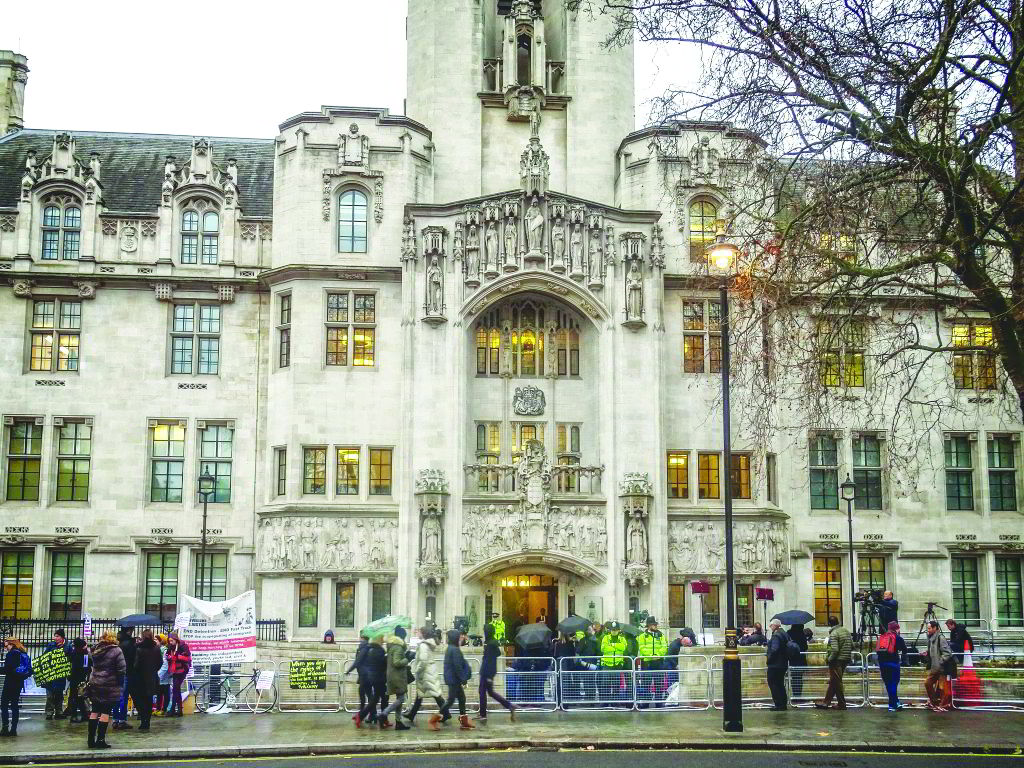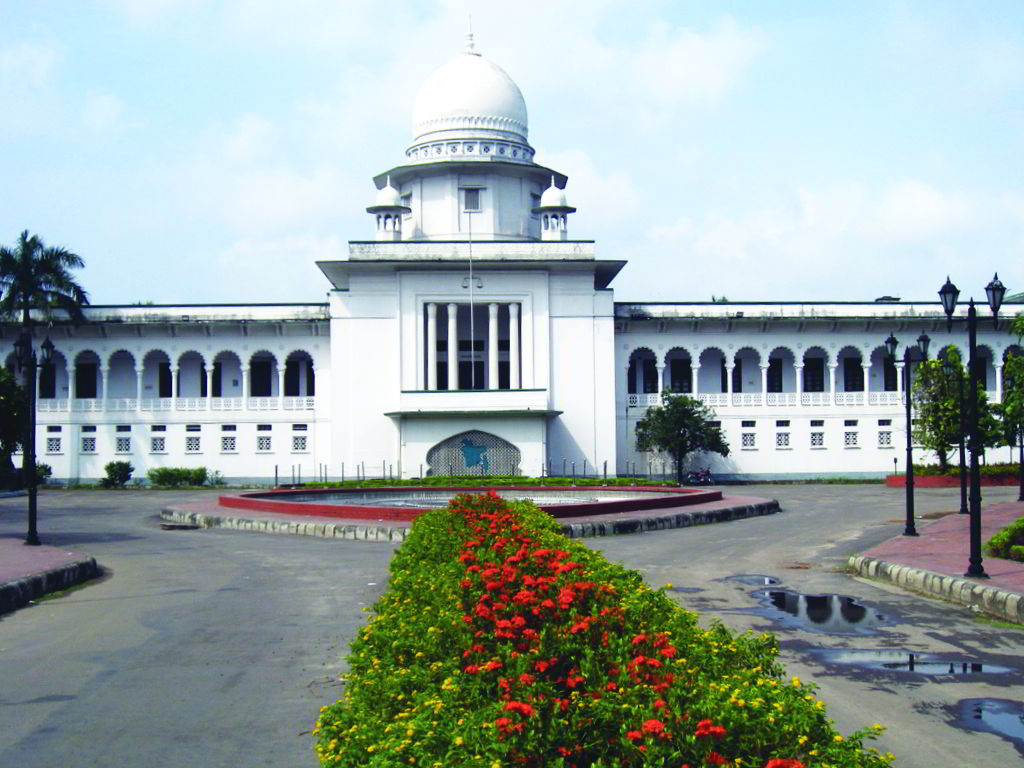Above: Judges of the Supreme Court and 24 high courts are all set to get a well-earned raise. Photo: Bhavana Gaur
The government is all set to nearly triple salaries in the higher judiciary as part of a routine pay hike. How do they compare with pay packets of judges in other parts of the world?
~By Sucheta Dasgupta
When the parliament meets on December 15, the government will table two bills, both of which will lead to a substantial rise in the salaries of judges.
Once passed, the High Court and Supreme Court Judges (Salaries and Conditions of Service) Amendment Acts will lead to the Chief Justice of India (CJI) drawing Rs 2.80 lakh per month, and judges of the Supreme Court and chief justices of high courts earning Rs 2.50 lakh per month. Judges of the high courts will see their salary rise to Rs 2.25 lakh per month. This is nearly a 300 percent rise in some cases; the CJI’s current salary is just Rs 1 lakh.
The proposal to introduce the bills was cleared by the Union Cabinet last month, and will bring judges’ pay on a par with those of bureaucrats following the implementation of the Seventh Pay Commission recommendations. The cabinet secretary receives a salary of Rs 2.5 lakh per month.
Retired judges, too, will be entitled to increased pension and all packages will be effective retrospectively from January 1, 2016.
In India, salaries and perks of judges in the higher judiciary have been revised four times since Independence—1954 (1958 for high court judges), 1986, 1998 and 2009. But even after such a raise, how does the pay of Indian judges compare with their counterparts in the West and the rest of Asia? Not favourably.

ATTRACT TALENT
“If you compare the salary of our judges with those in western countries, then it is on the lower side. But our judges get perks like an official car, residence and orderlies,” retired Delhi High Court Chief Justice AP Shah told India Legal. He feels that though he himself did not worry about the pay because he loved the job, it should be hiked, not manifold, but enough to attract talent, so that “good people choose to enter the profession. Also, since these are two different kinds of jobs, we should stop tagging their salaries with bureaucrats’ salaries”.
Former acting chief justice of the Gauhati High Court Justice K Sreedhar Rao said: “The raise is well-deserved and it is not a bonanza. Already, it has been delayed by close to two years. Also, as judges are a constitutional force, our emoluments need not be equated with those of secretaries.” Justice Ravindra Singh, former judge of the Allahabad High Court, former chairman of the UP Law Commission and currently senior advocate in the Supreme Court, said that the perks of being a judge are considerable and “somewhat make up for the low salaries, though the raise has been long due”.
So, what are the exact figures when it comes to other nations paying their respective judiciaries?
WESTERN PACKAGES
In the US, as of 2015, federal district judges are annually paid $201,100 (Rs 12.9 million) and circuit judges $213,300 (Rs 13.7 million). Associate justices of the Supreme Court annually draw $246,800 (Rs 15.9 million) and the chief justice earns a handsome package of $258,100 per year (approximately Rs 16.6 million). Even though there are no perks, they also have no fixed retirement age, provided they exhibit good behaviour. Should they choose to retire at 65 or 70, they are entitled to receive their last annual salary for their entire lifetime. All judges are additionally permitted to earn a maximum of $21,000 (Rs 1.3 million) a year for teaching.
The Lord Chief Justice for England and Wales is Britain’s best paid judicial figure, receiving £244,665 (Rs 21.1 million) per annum, while the Supreme Court puisne judges earn over £208,000 (Rs 17.9 million). Federal district judges make £169,000 (Rs 14.6 million) yearly and federal appeals court judges £179,500 (Rs 15.5 million). What is significant is that the British prime minister’s salary at £149,400 (Rs 12.9 million) is less than even a district judge’s salary. But as there has been a four-year salary freeze since 2013, justices have been pitching for a pay rise and an extension of the retirement age from 70 to 75. Meanwhile, the public’s opinion is that it cannot afford the “panto-lifestyle of senior judges”.
Judges in the UK receive numerous perks. They get a weekly allowance of £310 (Rs 26,785) to cover food, drink and formal entertaining. They get to stay in a grand official residence, use an official car and are accompanied by a chef and a chauffeur to historic mansions and top-notch ritzy hotels when away from the capital to hear cases. Circuit, High and Supreme Court judges still enjoy the services of tipstaffs to tend to their every need. Judges also benefit from a substantial array of allowances ranging from those for wigs amounting to £1,930 (Rs 1.7 lakh) and £655 (Rs 56,587) a year to buying 18th century-style “frock coats”. They enjoy 36 days of paid holidays a year.
ASIAN SALARIES
In Singapore, the annual salary of the chief justice of the Supreme Court is S$347,400 (Rs 16.6 million), while that of a judge of appeal is S$253,200 (Rs 12 million) and of a judge of the apex court S$234,600 (Rs 13.2 million). That’s rather impressive, but there has been no salary hike since 1994, only a change in the gratuity amount which was passed by the Singapore parliament in 2014.

In Pakistan, with effect from July 2017, the salary of the chief justice of Supreme Court stands at 846,549 PKR (equivalent to Rs 517,848), besides 370,597 PKR (Rs 226,679) in superior judicial allowance, 68,000 PKR (Rs 41,551) as house rent if an official residence is not provided, and a medical allowance of 56,464 PKR (Rs 34,502) a month. Perks include two chauffeur-driven cars, a government residence with free electricity, water and LPG, 600 litres of car fuel and free medical treatment for the family. There is also a dearness allowance during official tours at 5,000 PKR (Rs 3,056) per diem, a transfer grant equal to one month’s pay if a judge has a family and equal to half month’s pay if a judge has no family and also reimbursement of transportation charges for journey on duty and exemption from income tax.
The salary of a Supreme Court judge in Pakistan is 799,699 PKR (Rs 488,931) and the superior judicial allowance is 370,597 PKR (Rs 226,580). Perks are the same as those of the chief justice. The salary of a chief justice of any of the four high courts is 784,608 PKR (Rs 479,830), besides 296,477 PKR (Rs 181,311) as superior judicial allowance. Perks are almost the same, except that the allowances are marginally lower and he gets 500 litres of fuel instead of 600. A high court judge in Pakistan gets 754,432 PKR (Rs 461,427) as salary and almost all other perks and privileges as the chief justice of a high court.
Compare this to the Pakistani prime minister’s salary at 140,000 PKR (Rs 85,647) which is far less than the handsome pay packets of judges. But Islamabad High Court advocate Salman Yousaf Khan told India Legal that parliamentarians need not have the same salary as judges and given their prestige and privileges, an increment would only be a “burden on the exchequer”. “Only an honorarium along with travelling allowances would be sufficient. Parliamentarians can be elected at 25 as members of National and Provincial Assemblies. On the other hand, a high court judge cannot be less than 45 years old in Pakistan. A Supreme Court judge retires at 65. In the higher judiciary, most cases involve influential parties. If a judge doesn’t have a good salary and protection for his family, he cannot provide justice to poor litigants,” Khan said.
Compared to them all, Bangladesh judges get modest remunerations. Since 2016, the Supreme Court chief justice has been receiving Tk 110,000 (Rs 85,600), a nearly two-fold raise from his earlier pay of Tk 56,000 (Rs 43,578). According to their Eighth Nation Pay Scale, the salary for appellate division judges stands at Tk 105,000 (Rs 81,695) while high court judges get Tk 95,000 (Rs 73,914). However, the benefits and perks compensate for difficulties. The chief justice draws an expense sumptuary allowance of Tk 12,000 (Rs 9,337), a domestic aide allowance of Tk 5,000 (Rs 3,889) and a car allowance of Tk 25,000 (Rs 19,445). Appellate division judges get an expense sumptuary allowance of Tk 8,000 (Rs 6,280), domestic aide allowance of Tk 4,500 (Rs 3,503), housing allowance of Tk 50,000 (Rs 38,921) and car allowance of Tk 25,000 (Rs 19,445). A high court judge gets an expense sumptuary allowance of Tk 5,000 (Rs 3,889), domestic aide allowance of Tk 4,000 (Rs 3,115), housing allowance of Tk 25,000 (Rs 19,445) and a car allowance of another Tk 25,000 (Rs 19,445).

HANDSOME PERKS
If one were to compare only monthly wages, a quick calculation shows that the seniormost judge in the US and Singapore earns approximately 14 times the Indian CJI, while this difference is exactly 17.6-fold in the case of the UK. But factor in the currency exchange rate and one comes to the conclusion that, money-wise, judges are better off only in Pakistan where the chief justice draws 1.8 times our CJI’s new salary. The standard of living being much higher in Singapore as well as in western countries, salaries there tend to be high. If one removes this item from the equation, the pay is on a par. Also, as Justice Rao said, while an Indian judge retires at 70, in the US judges continue to work until they, themselves, opt for retirement.
Speaking of perks, India’s CJI enjoys a monthly sumptuary allowance of Rs 20,000, a free official residence in Lutyens’ Delhi, a chauffeur-driven car, the services of five staffers, 1,500 free phone calls, water up to 36 kilolitres and free power up to 10,000 units. Medical treatment for the judge’s family is fully reimbursed. He is entitled to two leave travel allowances per year, plus, in case he is not from Delhi, another for travel to his home state. Other Supreme Court judges and the high court chief justice get a sumptuary allowance of Rs 15,000 while high court judges get Rs 12,000 under this category. Other perks are roughly the same, and leaves may include foreign travel. A high court judge gets 200 litres of car fuel and also the services of five staffers.
Even so, a range of new perks is on the cards. While the sumptuary allowance may be discontinued, dearness allowance for the higher judiciary is set to rise. Once the parliament passes the amendments, judges will get a steep hike in funds for furnishing their houses, ranging from Rs 10 lakh for the CJI to Rs 6 lakh for judges of high courts, payable biennially. The CJI will receive a Rs 16.8 lakh-plus dearness allowance, Supreme Court judges a Rs 15 lakh-plus DA and high court judges Rs 13.5 lakh-plus. Their gratuity will double to Rs 20 lakh.
With perks such as these, who needs salaries?


